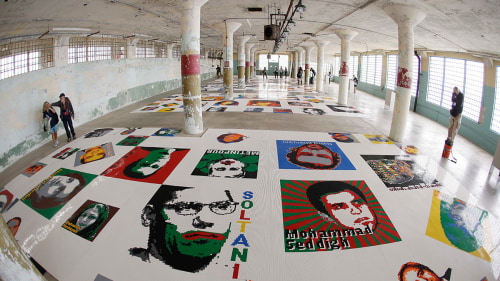
“The misconception of totalitarianism is that freedom can be imprisoned. This is not the case. When you constrain freedom, freedom will take flight and land on a windowsill.”
— Ai Weiwei
The Chinese artist Ai Weiwei is internationally renowned for work that defies the distinction between art and activism. In this exhibition of new works created specifically for Alcatraz, Ai responded to the island’s layered legacy as a 19th-century military fortress, a notorious federal penitentiary, a site of Native American heritage and protest, and now one of America’s most visited national parks. Revealing new perspectives on Alcatraz, the exhibition raised questions about freedom of expression and human rights that resonated far beyond this particular place.
Ai’s sculpture, sound, and mixed-media installations occupied four locations in the former prison: the New Industries Building; a group of cells in A Block; the Hospital; and the Dining Hall. With the exception of the Dining Hall, these areas were usually restricted to the public, but all were open throughout the run of the exhibition. @Large turned Alcatraz into a space for dialogue about how we define liberty and justice, individual rights and personal responsibility. In artworks that balanced political impact with aesthetic grace, the exhibition directly and imaginatively addressed the situation of people around the world who have been deprived of their freedom for speaking out about their beliefs — people like Ai himself.
A vocal critic of his nation’s government, Ai was secretly detained by Chinese authorities for 81 days in 2011, and only regained possession of his passport on July 22, 2015. As a result, the artist was unable to visit Alcatraz during the planning of this exhibition; he developed the artwork at his studio in Beijing, with the help of the FOR-SITE Foundation. Ai embraced the ironies of creating site-specific art for a place he couldn’t see, and of celebrating free expression while working under severe constraints. Conflict and struggle have only galvanized the artist’s commitment to art as an act of conscience. With this project, he aimed to expand our understanding of “the purpose of art, which is the fight for freedom.”